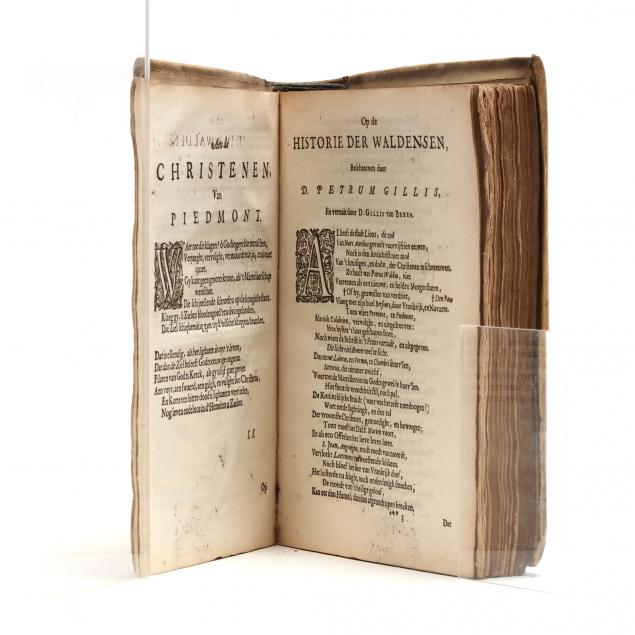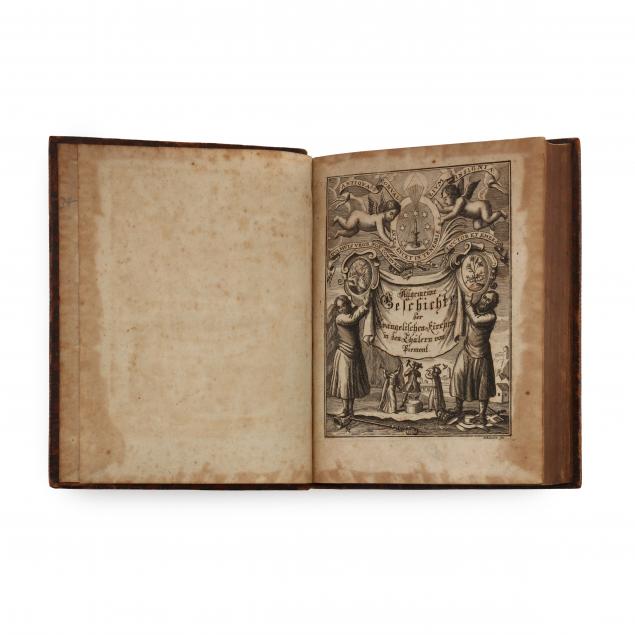
Lot 4185
Two Rare Dutch and German Books on the Waldenses
Lot Details & Additional Photographs
Pierre Gillis. KERKELYKE HISTORIE DER WALDENSEN. Amsterdam: Jaques Boursse, 1657. First edition. Full vellum, yapp edges. 4to; [28], 496, [44]pp. With engraved frontispiece, ornaments, and decorated initials; text in Dutch with double columns. (Vellum with discoloration, staining, and darkened spine; complete separation from textblock, only lower board remaining attached, lacking rear paste-down, several gatherings loose; pages with light toning and foxing, with occasional light grime or small stain; numerous small damp stains at corners and margins; a fair copy, but extremely rare; WorldCat locates one library copy at time of evaluation.)
Johann Leger; Hans Friedrich Freiherr von Schweinitz, trans. ALGEMEINE GESCHICHTE DER WALDENSER, ODER DER EVANGELISCHEN KIRCHEN IN DEN THÄLERN VON PIEMONT IN SWEY BÜCHERN MIT VIELEN KUPFERN. 2 vols. (complete). Breslau: Johann Jacob Korn, 1750. Full leather, gilt and raised bands on spine. 4to; [10], 58, 584; [4], 585-1720, [40]pp. Gothic type; translated into German from the French. First volume with engraved frontispiece and title page printed in red and black, second volume with index; with printed marginalia, head-pieces, ornaments, decorated initials, and numerous detailed engravings. (Boards scuffed with stains, spines rubbed with creasing, vol. 1 with leather loss at head of spine, vol. 2 with tear at head, joints rubbed with cracking starting at head and tail; paste-downs with remnants of old labels, interiors with staining from binder's glue, toning, and foxing, occasional later manuscript or ink mark; vol. 2 with occasional minor grime, small tear, and damp staining, missing numerous plates between pages 943-953; vol. 1 with one wormhole and minor corner damp staining; overall sturdy volumes with crisp pages.)
8 1/8 x 6 1/2 in.; 8 3/4 x 7 in.
From the Collection of Professor Roberto Severino, Washington, D.C.
The Waldensians (or Waldenses) is a religious movement that formed in the 12th century. Starting in France, the movement spread quickly to other countries, including Germany.














